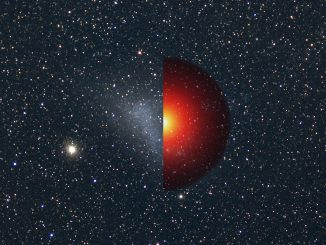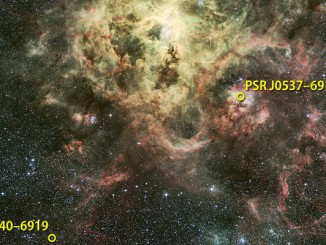
NASA’s Fermi Gamma-ray Space Telescope




Record-breaking extragalactic gamma-ray binary found
Using data from NASA’s Fermi Gamma-ray Space Telescope and other facilities, an international team has found the first gamma-ray binary in another galaxy and the most luminous one ever seen. The dual-star system, dubbed LMC P3, contains a massive star and a crushed stellar core that interact to produce a cyclic flood of gamma rays.

Fermi space telescope expands its search for dark matter
Dark matter, the mysterious substance that constitutes most of the material universe, remains as elusive as ever. Although experiments on the ground and in space have yet to find a trace of dark matter, six or more years of data from NASA’s Fermi Gamma-ray Space Telescope has broadened the mission’s dark matter hunt using some novel approaches.

Gamma-ray space telescope poised to pin down gravitational wave sources
On 14 September 2015, gravitational waves produced by a pair of merging black holes gently rattled space-time in the vicinity of Earth. Less than half a second later, NASA’s Fermi Gamma-ray Space Telescope picked up a brief, weak burst of high-energy light consistent with the same part of the sky. Analysis of this burst suggests that the events are connected.

NASA’s Fermi satellite detects first gamma-ray pulsar in another galaxy
Researchers using NASA’s Fermi Gamma-ray Space Telescope have discovered the first gamma-ray pulsar in a galaxy other than our own. Known as PSR J0540-6919, the object sets a new record for the most luminous gamma-ray pulsar known. The pulsar lies in the outskirts of the Tarantula Nebula in the Large Magellanic Cloud, a small galaxy that is located 163,000 light-years away.

